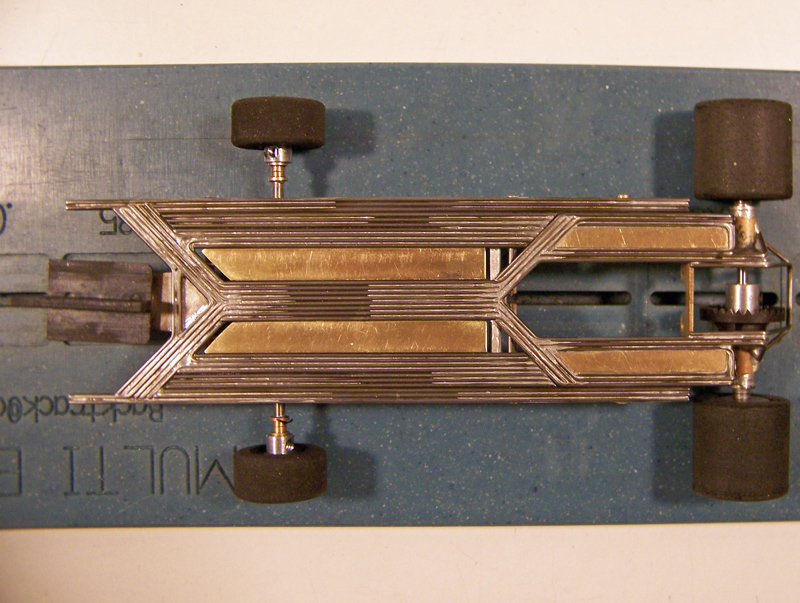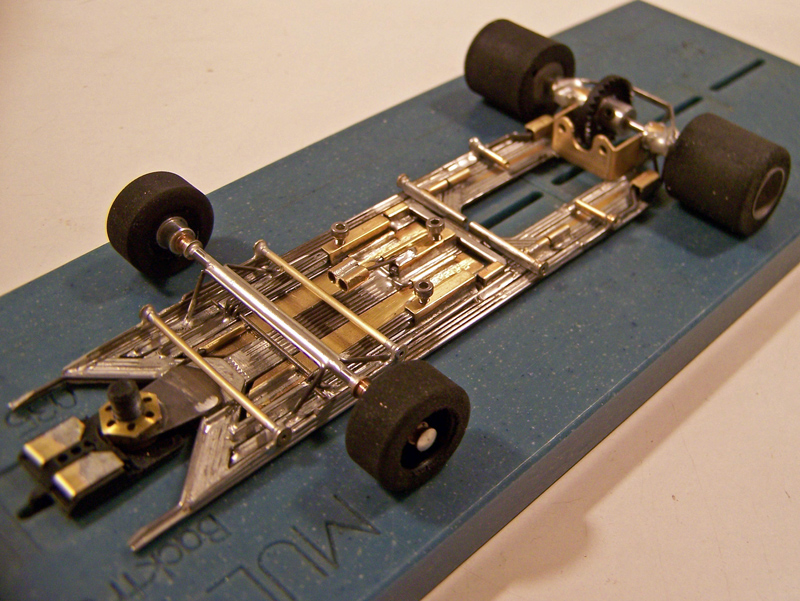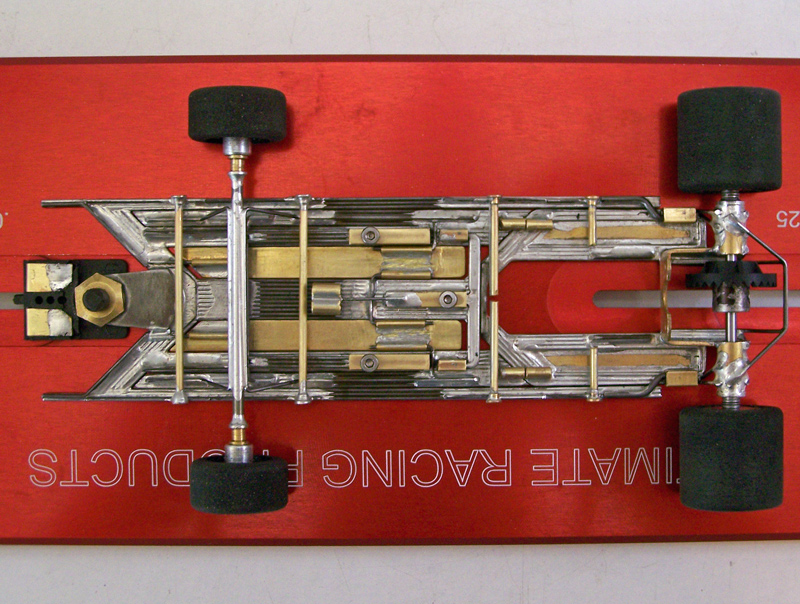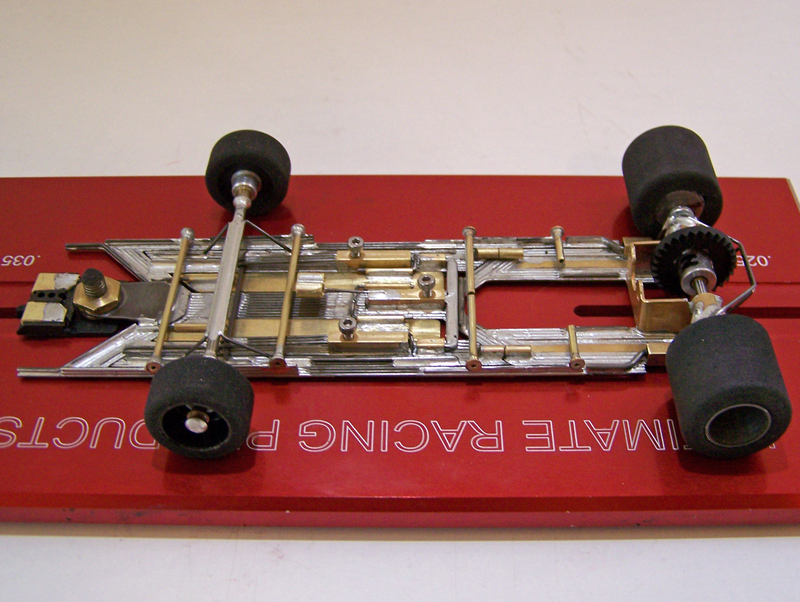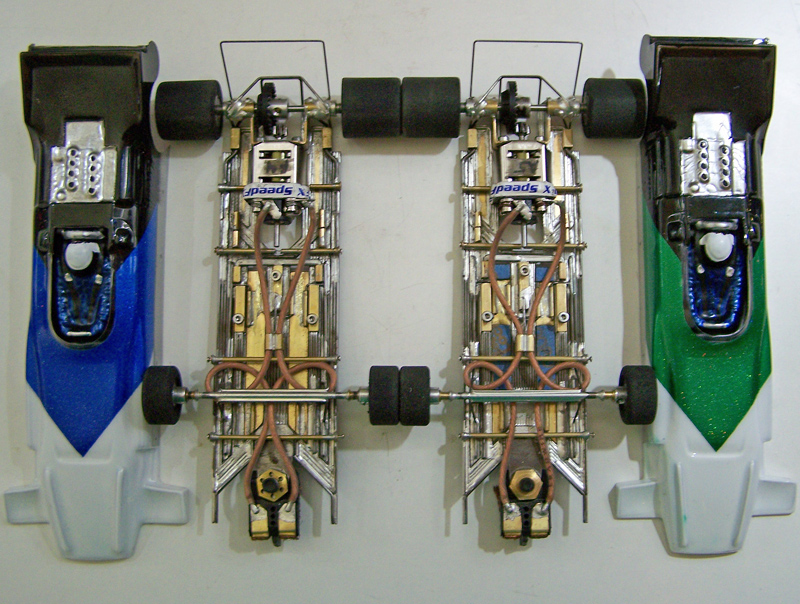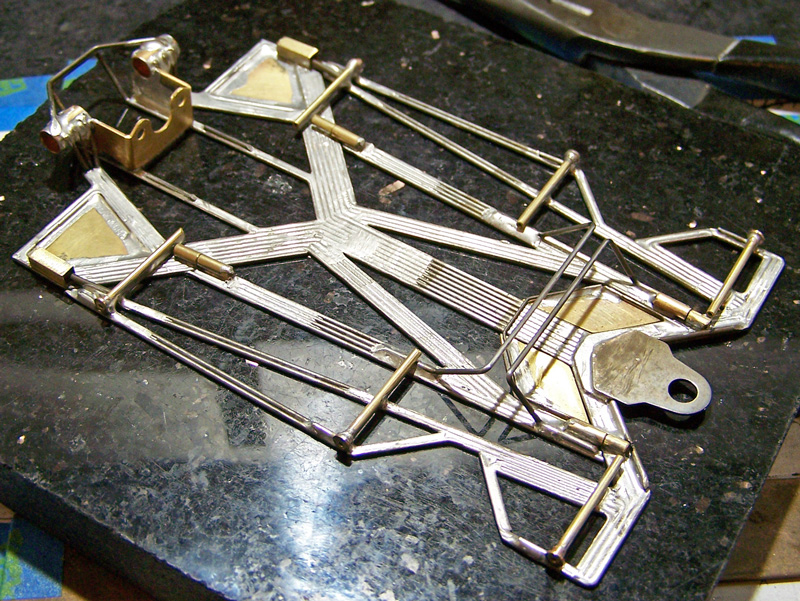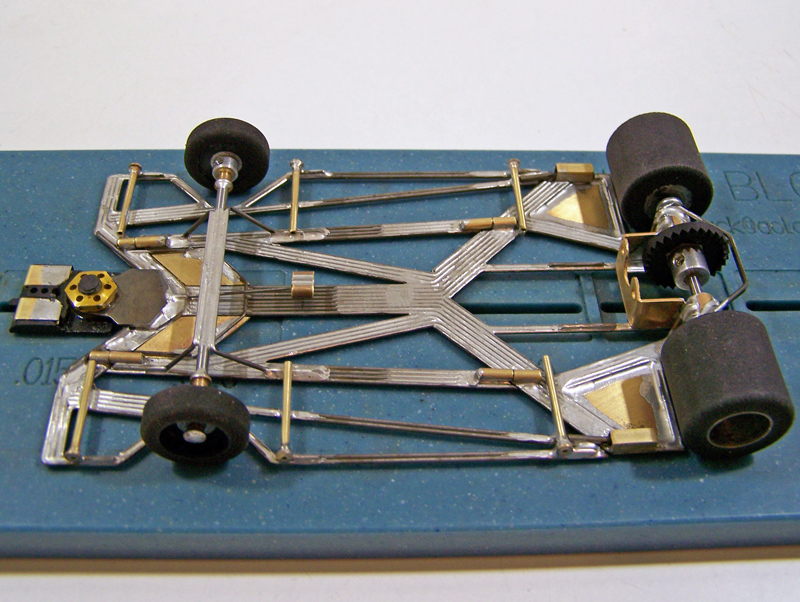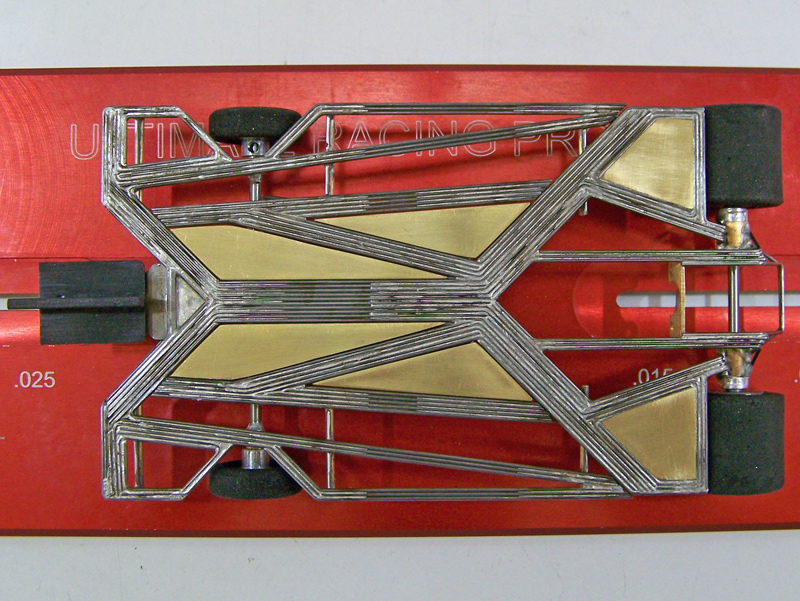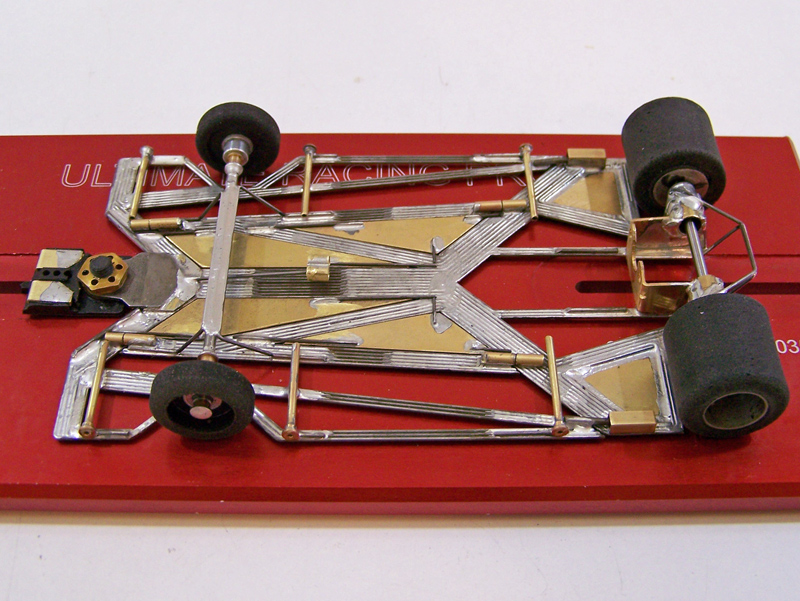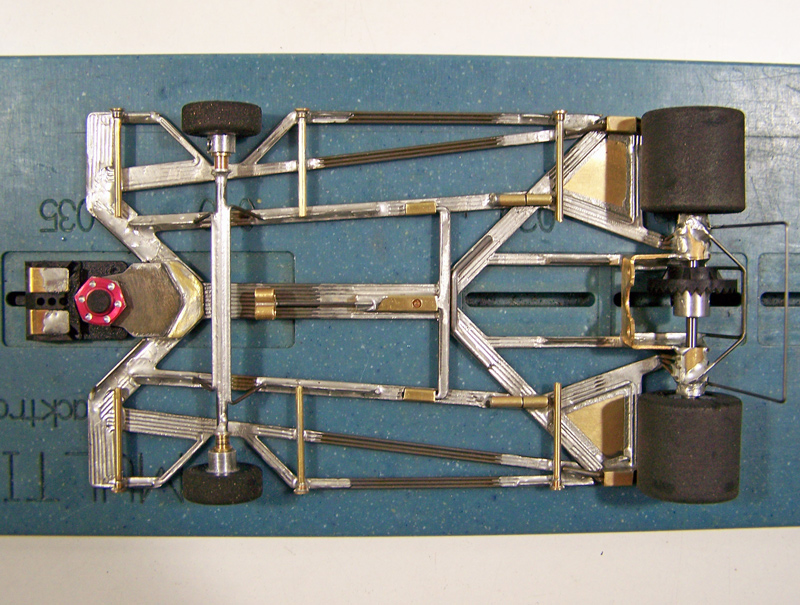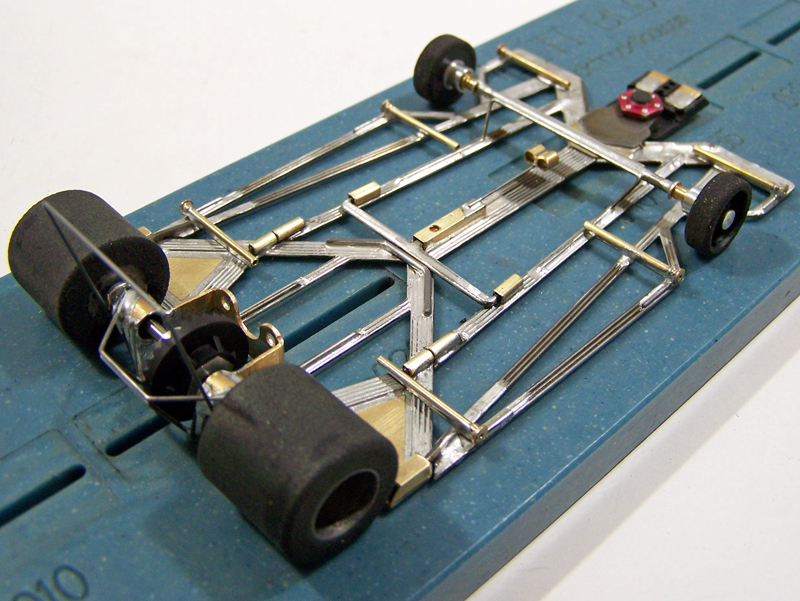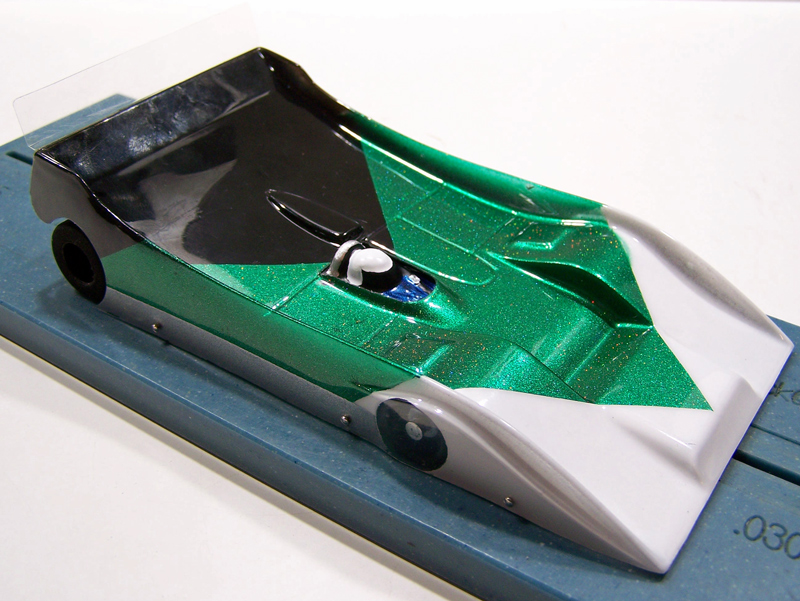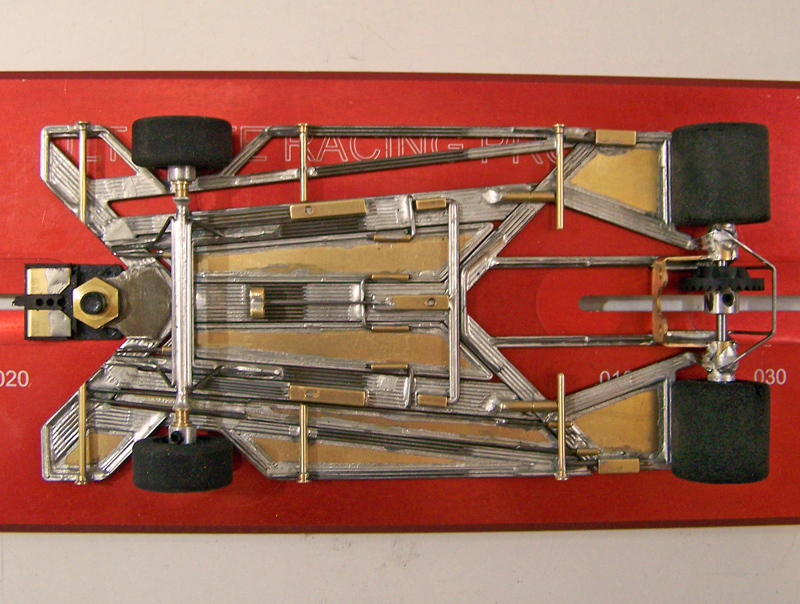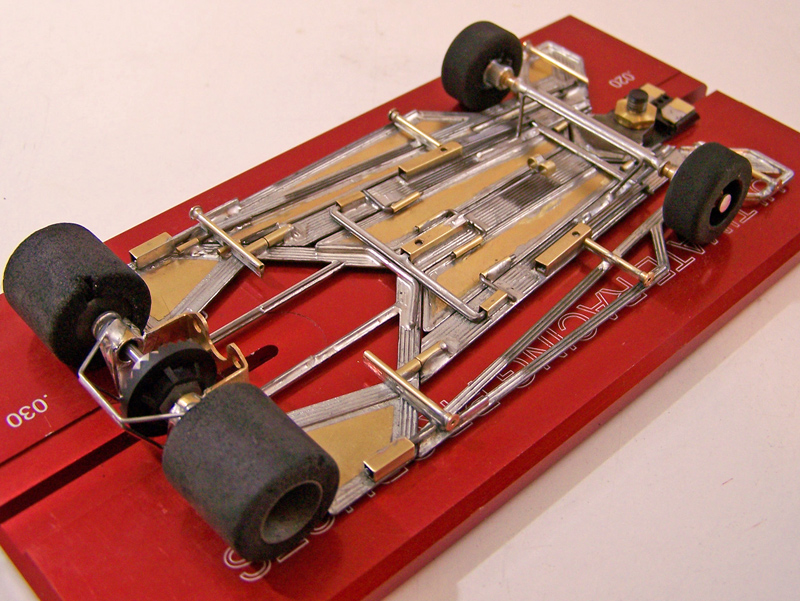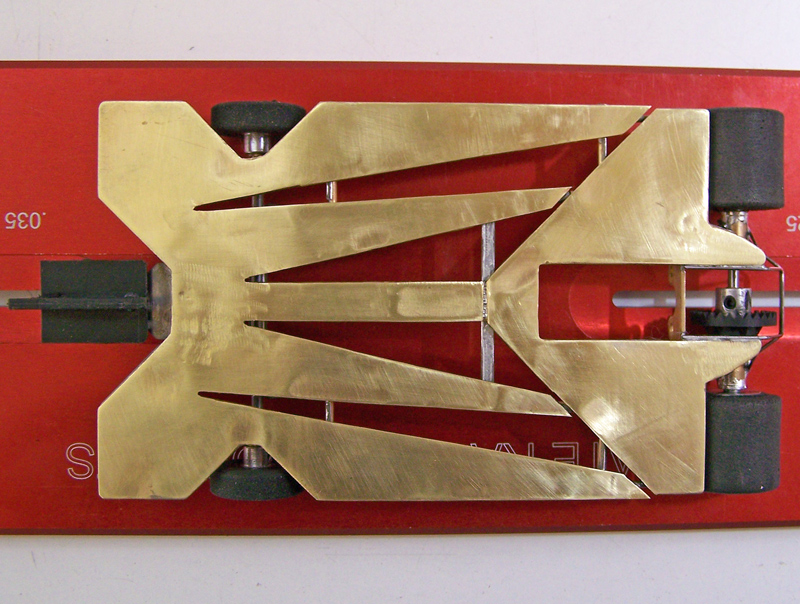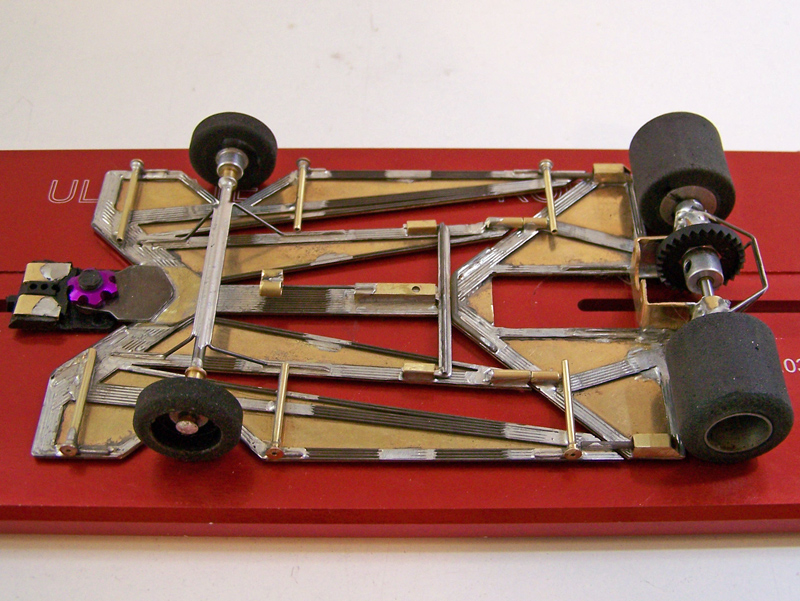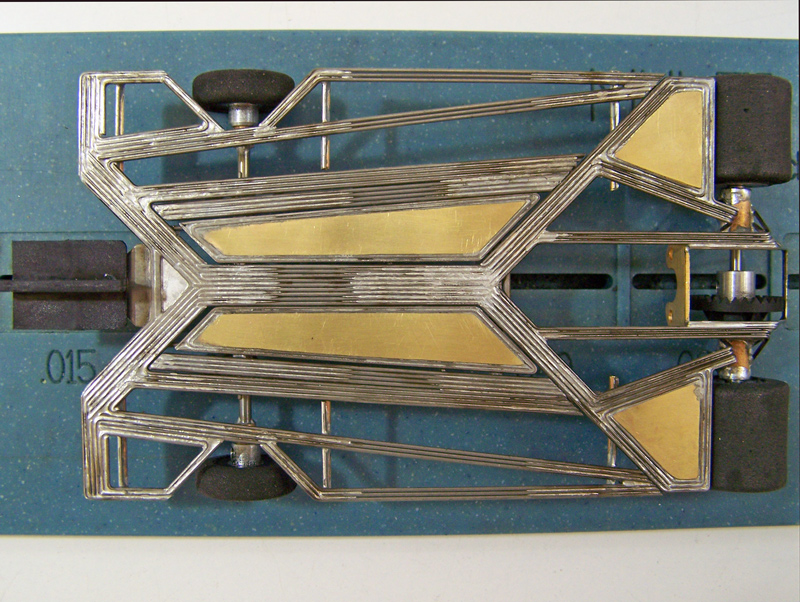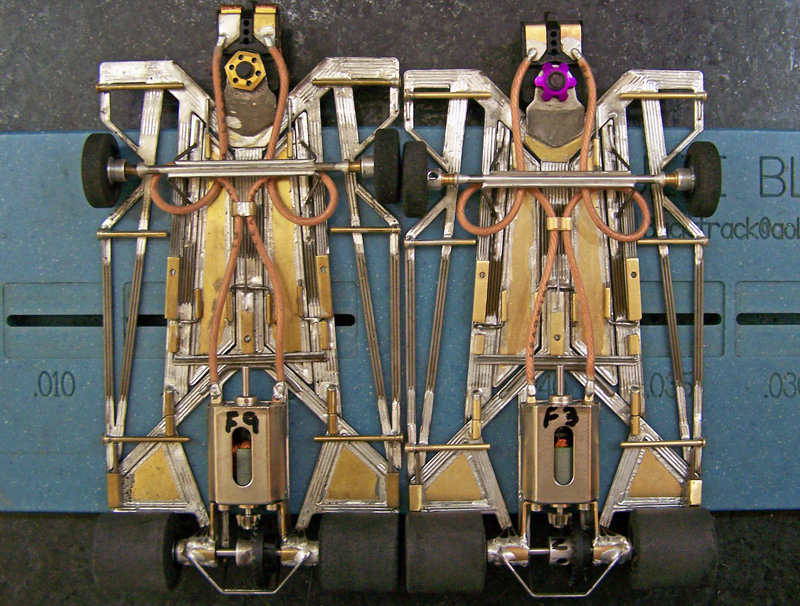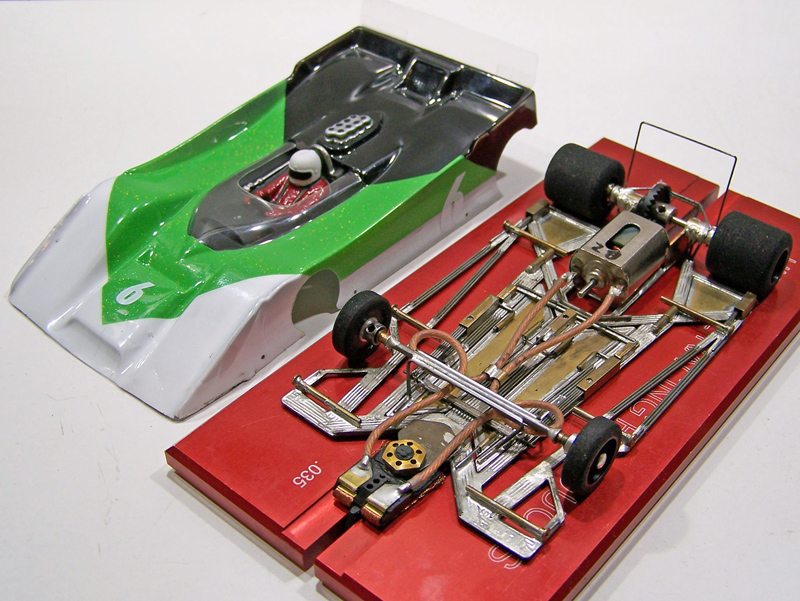1241-Cc3
After a break to take care of some of that pesky “life” stuff, it was time to get back to this slot car chassis designing and building fun stuff.
When I made the skip to the 1245’s, there was still a pending build in the progression, specifically the 1241, so I had to tie up this loose end. In actuality this was not back-tracking, as elements of the 1241 design were taking on aspects of subsequent designs, as well as applying some component alterations based on observations of the preceding chassis. The result of this pondering procrastination would be the 1241’s final design being quite different than the original draft. Since there was no possibility of returning to that original design, there was no need to re-designate the latest version with a different alpha-numeric moniker. So while it is a 1241, it is definitely not what the 1241 started out as… more like “1241 version 2.0”…
In a nutshell, the 1241 retains the 1237’s singular solid central main rail with flanking articulated buttress rails, but adding front axle rails; however, unlike the 1239 and 1240 that have twin front axle rails flanking each left and right buttress rail both laterally and medially, the 1241 only has a single front axle rail on each side flanking each buttress rail on the medial side only; also the front axle rails, independent on the 1239 and 1240, on the 1241 are connected to each other by a “torsion bar”, that also acts as the contact point for the variable spring wires (VSW) located on the buttress rails; the result on these revisions of the 1241 is, for the first time in one of my designs, this places the VSW’s lateral to the front axle rails and front axle uprights (as opposed to medial on the 1225-1233’s, and neutral on the 1239-1240).
Having built the 1237’s, as well as the 1245’s, in both 0.039” wire framing (“2”) and 0.032” wire framing (“3”), I saw no need to build the 1241 in 0.039”, so 0.032” wire it would be.
And for this first 1241 build I’m keeping with the standard “c” dimensions (3.875”/4.875”/1.00”). At some point I want to try one of these chassis with “b” dimensions (3.75”/4.75”/1.00”) and/or “d” dimensions (3.75”/4.875”.1.125”), after the success of the F1 A216’s “e” dimensions (3.875”/5.00”/1.125”), and then doing some retesting of the old 1229-Cc2, 1229-Cb2 and 1229-Cd2 on the Hillclimb track at Fast Eddie’s.
So, whether in consideration of or despite of all that, here’s the 1241-Cc3:


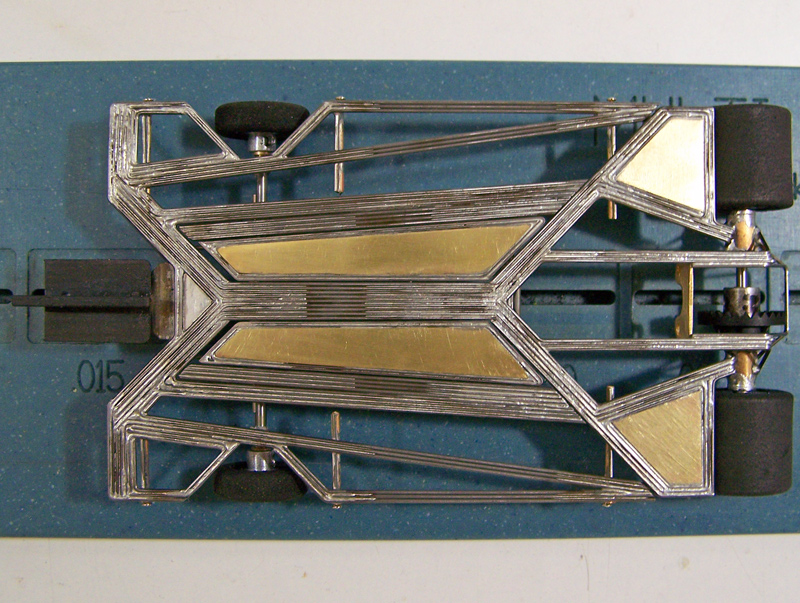



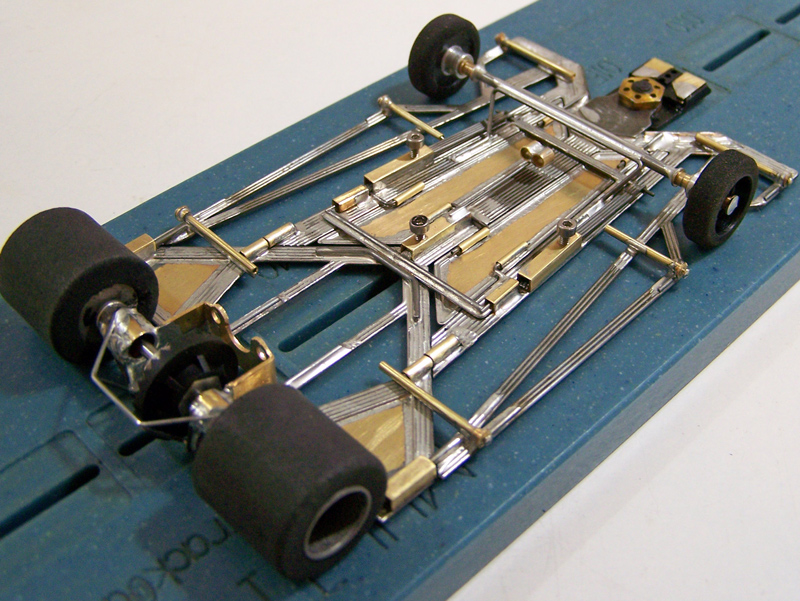

The adjustable bite bar of the 1237-series is still a component on the 1241 (the thinking being this will be a desired component if the 1237-1241’s ever wind up on a swoopy King, even though there are no King tracks in Floridada, swoopy or otherwise…). Also, the 1237-1238’s dynamic pans between the central main rail and the front axle / buttress rails are incorporated, with the exception on the 1241 these pans fill the entire space; on the 1241 the pans are 2x wide 0.024” wire as a perimeter with 0.010” brass sheet as filler (and if you’re wondering why I usually don’t just cut some sheet brass to make pans, there are three reasons: 1) they weigh a lot less; 2) though more labor intensive, I like the way they look “framed”; 3) because I can).
Also on the 1241 the VSW’s have been changed, from the 3x wide 0.032” wire on the 1239 and 1240, to 4x wide 0.024” wire. This is largely an experiment; could be good, could be bad, or even could be both; if it works I can easily change the 1239 and 1240 to 0.024” VSW’s, and if it doesn’t I can just as easily change the 1241 to 0.032” VSW’s.
The 1241-Cc3 would also immediately have a “sissy bar” added to the chassis (see “Testing Update”).
The mass of the RTR car came out to 101.0 grams. Not bad.
As a side note, I finally ran out of TrueScale McKee bodies, and the older ones on the 1237-1240’s had been banged up during this past year of tuning and testing, so, to keep everything uniform during testing and comparisons, all the chassis/cars, including the 1245’s, are now topped with Parma 1041-B Ti-22’s (and, of course, painted in CMF3 white-color-black tricolor chevron livery, so as not to be confused with every other Ti-22 out there… and so my addled brain can remember which car is mine…).
Testing Update:
I got over to Fast Eddie’s Raceway last week to re-sort all the CanAm chassis littering this thread since reconfiguring them back into “test mode”; for those who have lost track, to date these seven chassis are:
1237-Cc2
1237-Cc3
1238-Cc3 *
1239-Cc3
1240-Cc3
1245-Cc2
1245-Cc3
Part of this included that all of them have a relatively equal bunch of “reasonably fair-to-middling” test motors pushing them around, and, with the rule change for 2017, are now all R-Hawks.
With few other slot car geeks present for Test & Tune last week (and this week), and the Hillclimb at Ed’s in excellent condition, I was able to run all cars on Orange, Black and Red lanes, getting enough testing data to warrant using a spreadsheet to sort it all out. I had noticed trends previously with the 1237 - 1240’s where certain chassis showed preferences for various lanes; adding the 1245’s to this mix only complicated all this further. And people wonder why I write all this down in notebooks…
The short version: Typically the 1245’s run best on the middle to lower lanes, while the 1237’s run best middle to upper lanes, while the 1238 runs best in the middle, and the 1239 & 1240 are “gutter” chassis (but the 1239 better on upper, and the 1240 better on lower). Keep in mind, all these chassis are extremely even in overall performance (averaged across all lanes), and I would have a hard time objectively selecting any one as my “go to” race chassis, while at the same time having no problem choosing any one of them.
In another WAG tune/test experiment, the 1245-Cc3 had a 0.024” wire “sissy bar” added, running from the rear axle tubes to the top-underside of the Ti-22’s rear spoiler; it appears to have smoothed out the handling for this chassis, and was the main reason for putting a sissy bar on the 1241 at the onset. More testing needs to be done in this regard before putting them on the other 0.032” wire framed chassis.
So the idea with building the 1241 was to get even better handling across all lanes.
* 1238-Cc3: For those of you keeping track of all this, which I imagine is no one, though I’m not superstitious, knock on wood, over the course of this year I’ve come to consider the 1238 to be a “cursed” car, a phenomenon I’m sure some of you understand. If someone decides to put their hand on the track to pick up their car, if another car you just passed follows you kamikaze-style into the next turn, if there is a car off under the bridge and the driver doesn’t bother to say, “Caution under the bridge”, if another car on the track decides to stop dead in the high bank for some unknown reason, the 1238 will find it unfailingly. If nothing else, the fact the 1238 still runs has at least shown me many of the structural aspects of these chassis under “trauma” conditions… All that said, the ding-dang thing is still as competitive as any of the other chassis, even running the outright fastest lap of the last week’s testing, and second fastest this week… go figure…
1241-Cc3 Test Run:
Sorry. I realize this post is getting overly long, but sometimes the simplistic approach is insufficient to having a complete understanding. I went back to Fast Ed’s last night, so, here’s the scoop on the new 1241:
It worked. The 1241 was outright fastest on Orange (better than the 1238), was right there with the 1240 and 1245’s on Black, and just behind the 1237’s on Red (but the 1239 is a rocket on Red). Overall the 1241 averaged the best performance across all lanes.
But… that is just the first time out; it needs to be able to do that consistently with time…
Still, this was “out of the box”, so it bodes well; and I didn’t play around with the tuning screws, except to see if there was finer tuning of the 0.024” VSW’s on the 1241 versus the 0.032” VSW’s on the 1239 and 1240; there was. More to be determined on this matter.
That’s all folks!
Rick / CMF3





